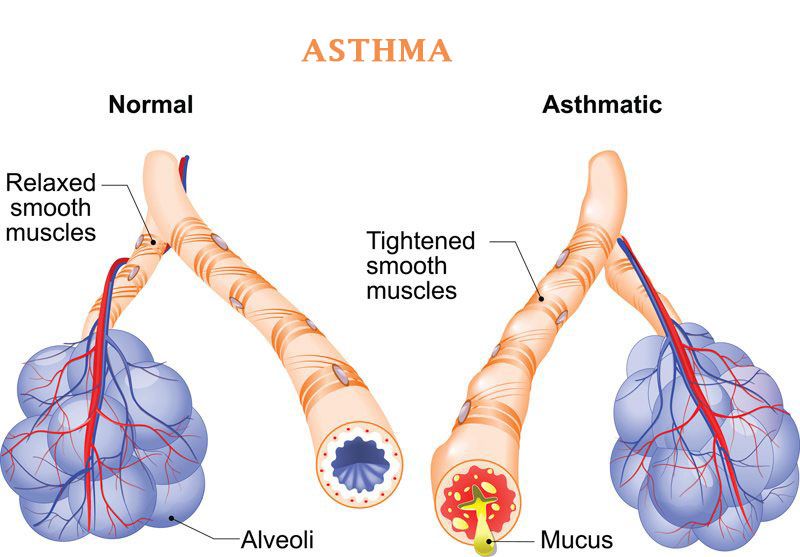
Asthma is an inflammatory disease of the airways to the lungs. It is a chronic, or long-term condition that intermittently inflames and narrows the airways in the lungs. Paitnet experiences difficulty breathing and can make some physical activities difficult to perfome.
Asthma affects people of all ages and it often starts during childhood. Asthma causes periods of wheezing, chest tightness, coughing and shortness of breath. Asthma symptoms can range from mild to severe. It may happen rarely or every day.When symptoms worsen, it is called an asthma attack, exacerbation, or flare-up. Uncontrolled asthma can damage the lungs.
Asthma attacks are episodes that occur when symptoms get much worse. Asthma attacks can happen suddenly and may be life-threatening. People who have severe asthma experience asthma attacks frequently. There are certain things that can set off asthma symptoms, these are known as triggers. Some of theses triggers include: Smoking, stress, polluted places, Perfumes, Flowers, animal fur , certain Food items ( chocolates, ice-cream), Cold and flu.
Several tests may be done to help determine if asthma is likely to be the cause of symptoms. These tests include:
To rule out other medical conditions include following tests are done:
Treatment for asthma are divided into three primary categories: